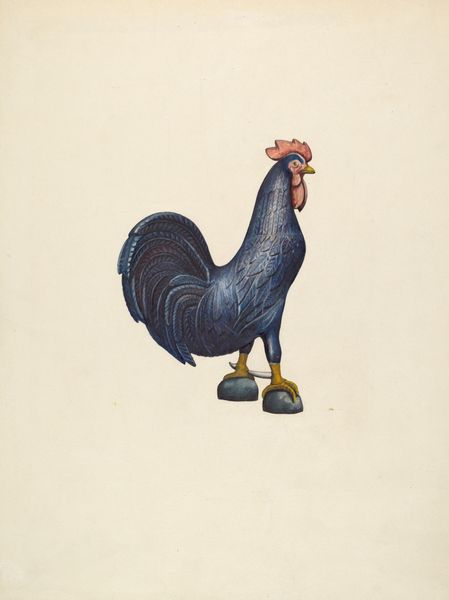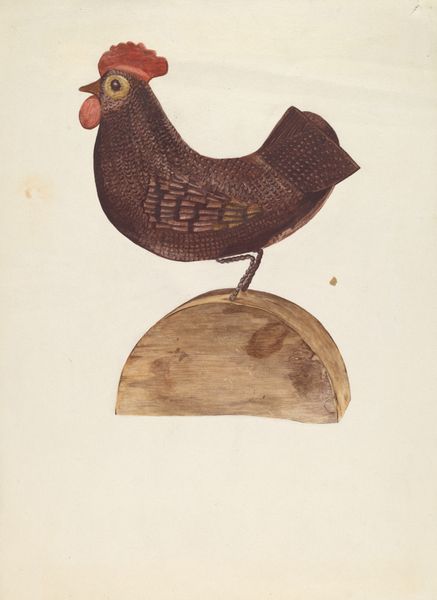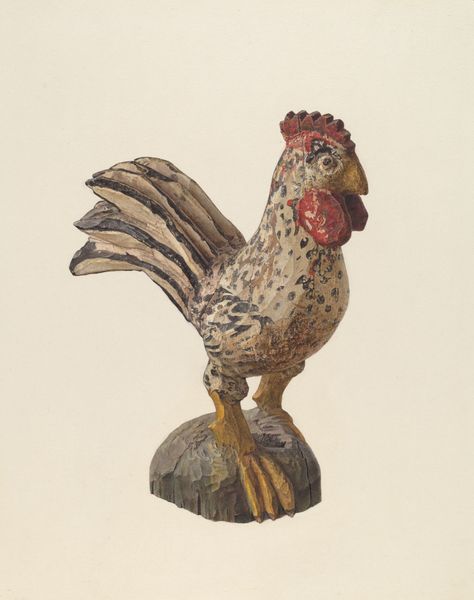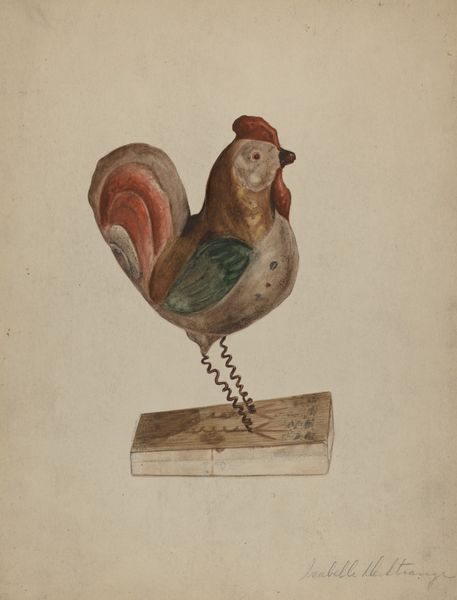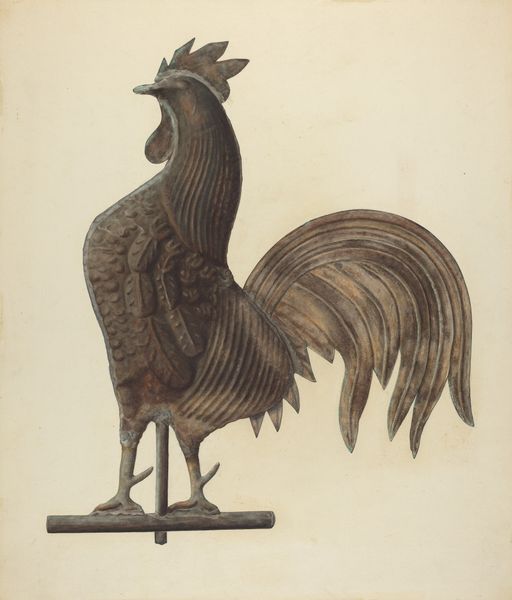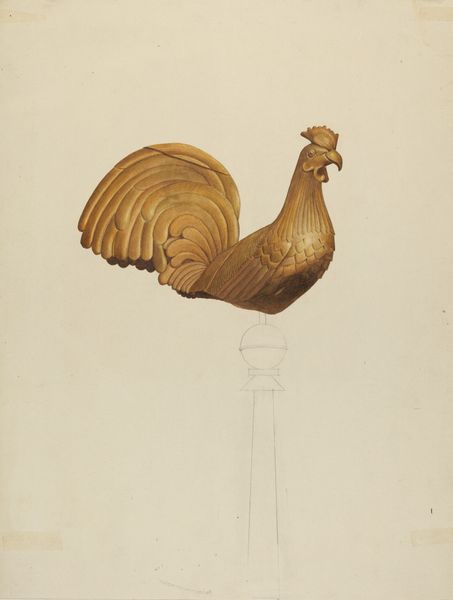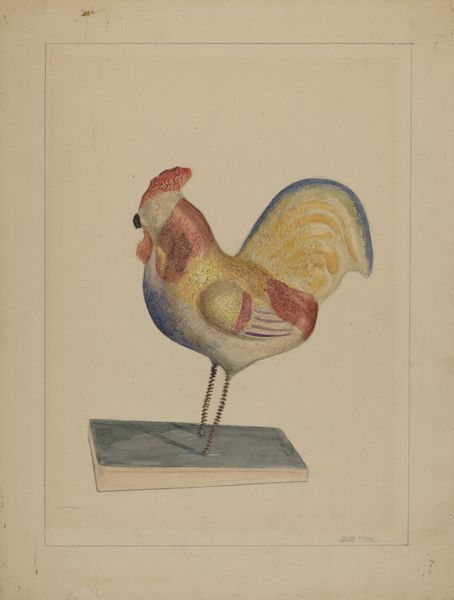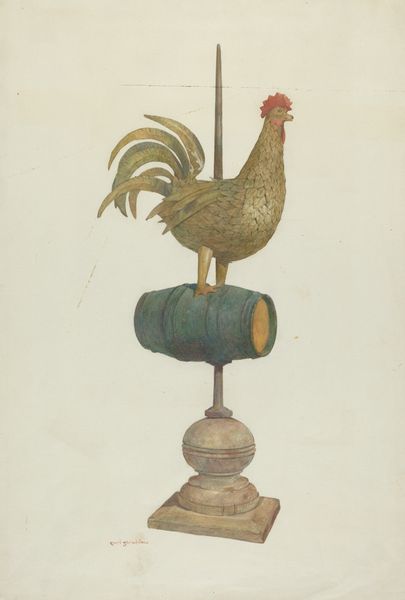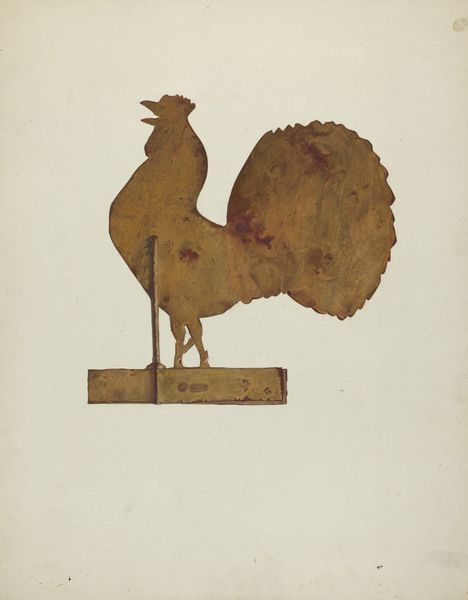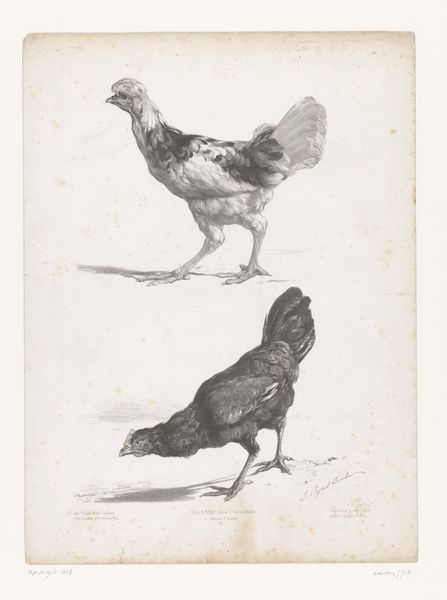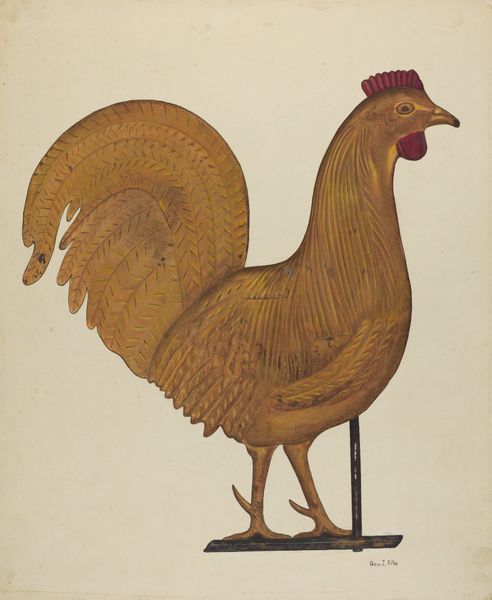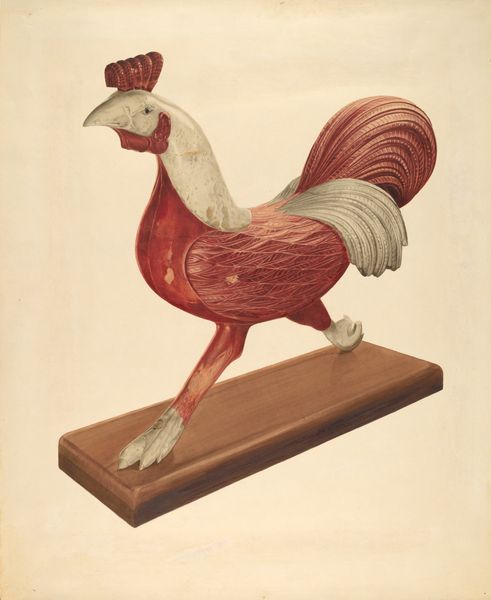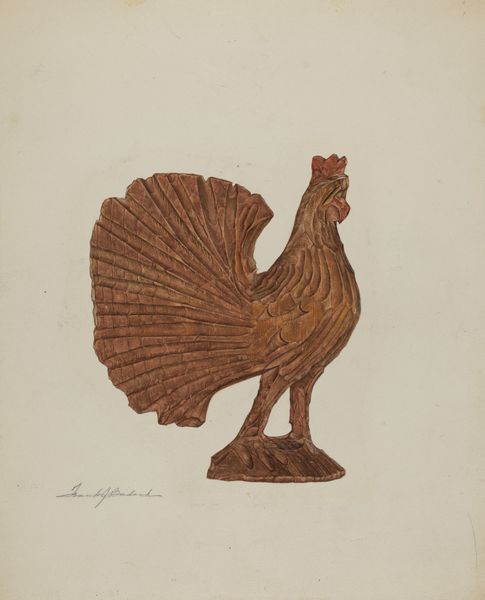
drawing, watercolor
#
drawing
#
figuration
#
watercolor
#
watercolour illustration
Dimensions: overall: 35.6 x 25 cm (14 x 9 13/16 in.)
Copyright: National Gallery of Art: CC0 1.0
Curator: This watercolor illustration, aptly titled "Counterbalance Rooster," was created by James H.C. Vail around 1936. Two studies of the same rooster form a stark contrast. What’s your initial impression? Editor: It’s curious—a little melancholy, actually. The colors are muted, the lines are precise but without warmth. There's a loneliness suggested by the pale background and by these figures seeming so... contained. It reminds me of weather vanes, of direction. Curator: A fitting association. Given the context of the 1930s, we might explore the socio-political climate that might have informed Vail's choice of the rooster. Was this simply a rural emblem, or did it serve as a commentary on societal structures? What meanings are ascribed to roosters as cultural symbols, especially within marginalized communities during that period? Editor: Right—I see what you mean about that broader context. I’m drawn to how the rooster as an image speaks to pride, vigilance, even aggression. Think of its presence in various cultural mythologies. Is it simply farm décor, or something more defiant, representing perhaps a call to resistance, a marker of cultural pride? Its shiny coat looks like metal--which may imply an age, craftmanship, and pride in folk-traditions during times of hardship. Curator: I'm fascinated by how we perceive its material presence and, equally important, what absences are highlighted within this watercolor—absences related to cultural representation. How does the depiction engage with or resist stereotypical imagery? Editor: Interesting point. Its shiny materiality almost becomes secondary. I look instead at the two iterations here--what does the difference in scale do? Are we looking at progress and maturity, parent and child? We read it differently. Curator: Precisely! It brings the personal and political together in this seemingly simple drawing. Editor: Looking at it, I can no longer ignore the echoes of its layered meanings; it gives one pause, to consider symbols carefully. Curator: Yes. We are drawn toward cultural analysis as well and can move to interpreting art that is deceptively straightforward.
Comments
No comments
Be the first to comment and join the conversation on the ultimate creative platform.
